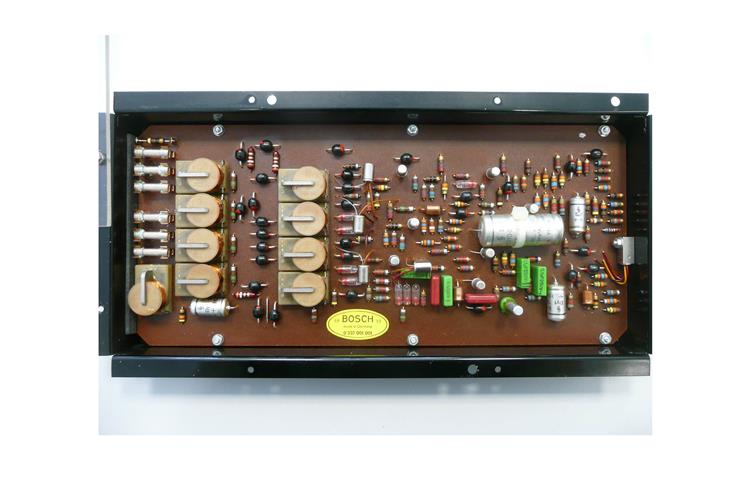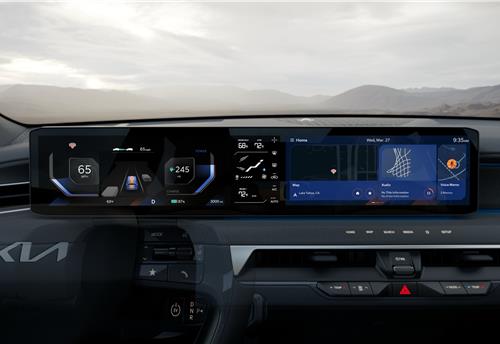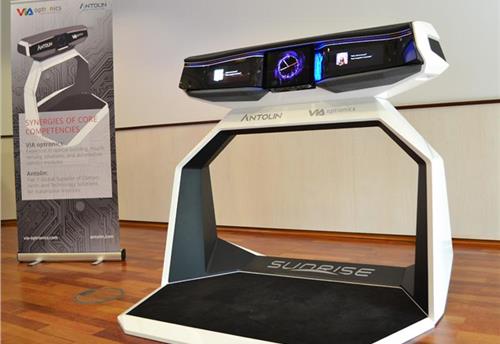The automatic transmission with electronic control turns 50
This year marks a half-century of the automatic transmission, a revolutionary system that taught the car how to change gear itself.
This year marks a half-century of the automatic transmission, a revolutionary system that taught the car how to change gear itself.
Fifty years ago, the first Bosch prototype featuring electronic transmission control made its maiden journey. The gearshift of the Glas 1700 – a modern mid-range sedan – moved as if by magic. The engineers used the car as a test vehicle for a completely new type of system, hoping that electronic control for manual transmissions would relieve drivers of the need to depress the clutch and shift gears by hand.
The technology was developed under the leadership of young engineer Hermann Scholl, who is now the honorary chairman of the Bosch Group (pictured below). It was designed to be an affordable alternative to expensive automatic transmissions, which back then were offered almost exclusively in luxury sedans. Several hundred systems were manufactured for the Glas 1700 in 1965. “However, electronic transmission control technology was ahead of its time. The market wasn’t ready for it,” Hermann Scholl says. In addition, it was during this time that the family-owned company Glas was acquired by the automaker BMW, and BMW was not interested in using the new technology in its cars.

Motronic: the basis for automatic transmissions
It was not until years later, in 1979, that another Bosch invention was to be the trigger for the mass success of the self-shifting transmission.
With Motronic – a combination of electronic fuel injection and ignition – Bosch had installed a freely programmable microprocessor in cars for the first time. But there was more to it than that. In combination with its separate memory, it was the first ever instance of a computer being used in a car.
“Motronic provided a second chance for the transmission control system – though this time for automatic, not manual, transmissions. In combination with the engine management system, it ensured the ideal automatic gear change,” says Scholl. It was only as a result of combining the two systems – electronic transmission control and engine management – that automatic gear change became far easier. When manually shifting gear, the driver also uses the gas pedal to control the engine. Similarly, the transmission control system sends commands to the engine. The engine management system interprets these commands and carries them out. In 1983, this transmission control system was installed for the first time in the BMW 745i – together with the 4HP22 automatic transmission made by ZF AG, based in Friedrichshafen, Germany.
Modern transmission control
At the time, the technology was still quite exclusive, but over the course of the following two decades, it became standard in all cars with automatic transmissions. It also anticipated a major trend. The electronic transmission control, which synchronises gearshifts with injection and ignition parameters, is, in the best sense, a connected system designed to provide optimum driving performance, comfort, fuel consumption, and emissions.
“The transmission control system selects gears in such a way that the engine is almost always in the ideal operating range. To make sure it stays that way, modern transmissions are equipped with a great deal of digital intelligence,” says Scholl. The control unit is a high-tech miniature computer that enables the complex operation of different types of automatic transmissions. Indeed, the processing capacity of a modern transmission control unit is 160 times more powerful than that of the computer used for the first lunar flight.
Today, half of all new vehicles in the world are equipped with an automatic transmission, and all the signs point toward greater connectivity. Bosch says proof of this takes the form of the electronic horizon, which connects the transmission with up-to-the-minute navigation information. Navigation systems know the area and can transmit this data to the automatic transmission, which, in turn, can shift into neutral during coasting and use the residual momentum – for example, when it knows that a lower speed limit is in force beyond the next bend. This ‘smarter’ automatic transmission combined with an electronic horizon can provide additional fuel savings of 10 percent or more.
RELATED ARTICLES
Marelli Talbros Chassis Systems wins Rs 1,000 crore business from European OEM
The order, to be executed over an eight-year period, is for the supply suspension arms tailored for both conventional in...
Kia launches customised NBA display themes for North American market
Display Themes is a customised service that supports a personalised vehicle experience, allowing users to customise the ...
Antolin and VIA Optronics unveil versatile vehicle cockpit concept
The Sunrise vehicle concept cockpit, which is engineered for seamless transitions between manual and autonomous driving ...





 By Autocar Pro News Desk
By Autocar Pro News Desk
 16 Jun 2015
16 Jun 2015
 3660 Views
3660 Views









